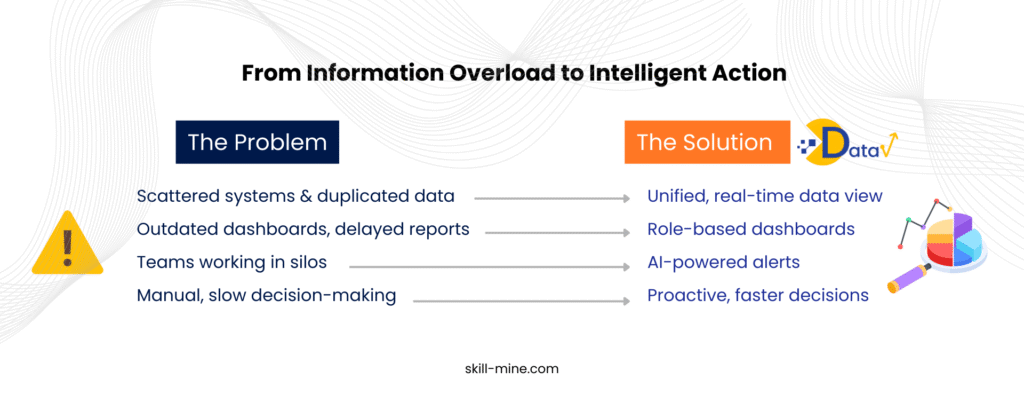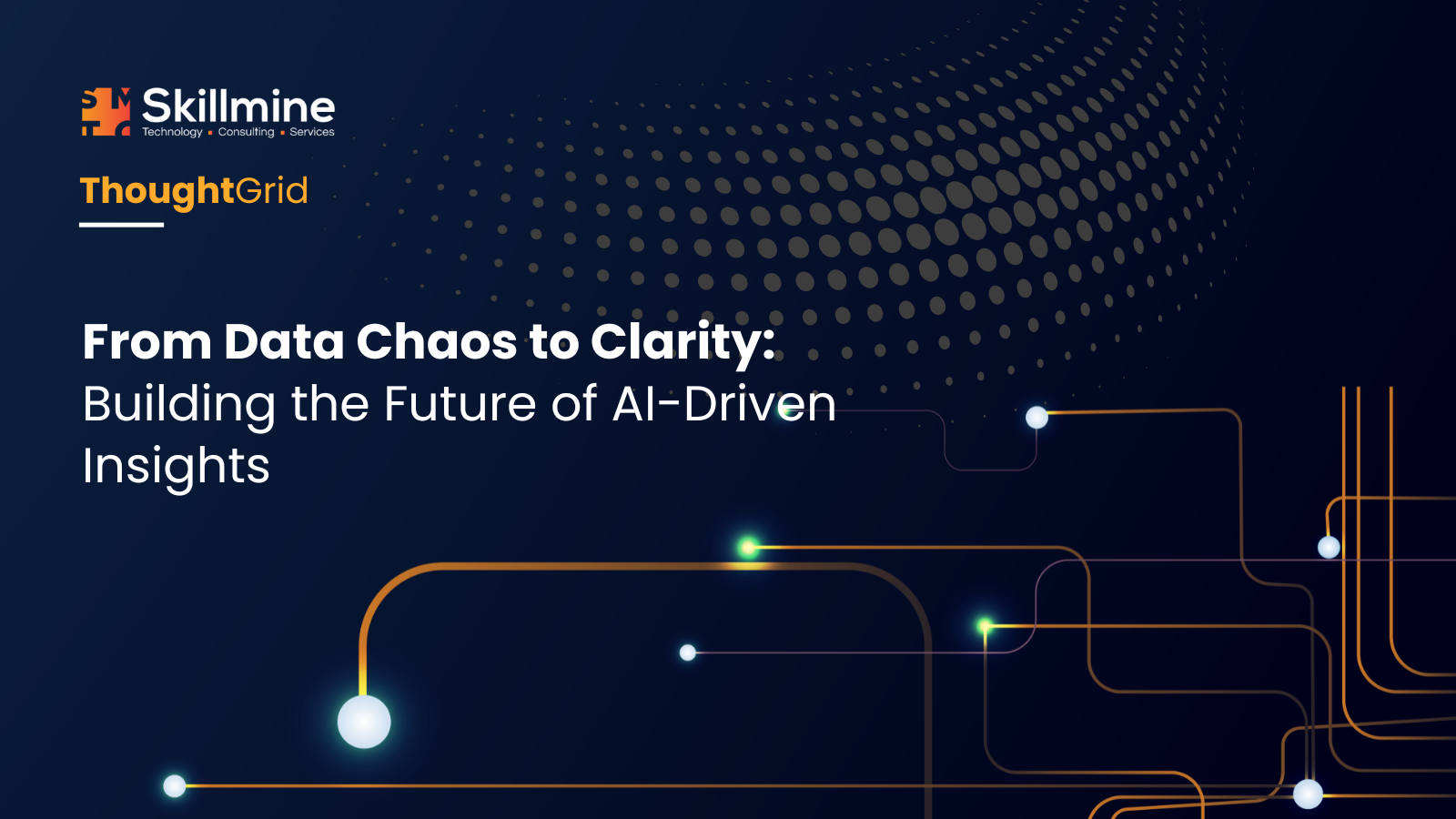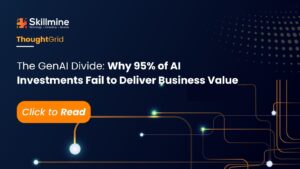In today’s data-driven world, businesses are generating more data than ever before. But the problem isn’t the lack of data, it’s the chaos that comes with managing it. From customer behavior and sales performance to operational data, companies are sitting on a treasure trove of information. However, data fragmentation and silos often prevent them from fully leveraging it. The result? Missed opportunities, slower decision-making, and operational inefficiencies.
The Real Problem: Fragmented Data and Siloed Systems
Imagine this scenario: a global retail company wants to understand customer behavior to personalize marketing campaigns. However, their sales data is in one system, customer feedback is in another, and inventory management is still tracked manually in spreadsheets. Each team within the company has its own set of data, but there’s no easy way to integrate these data streams into one unified view.
This fragmentation makes it difficult to make informed decisions. 73% of data-driven projects fail to meet business expectations, largely due to the inability to access and analyze fragmented data across various systems. Data becomes isolated, and businesses end up making decisions based on incomplete or outdated information, resulting in suboptimal outcomes.
This fragmentation makes it difficult to make informed decisions. 73% of data-driven projects fail to meet business expectations, largely due to the inability to access and analyze fragmented data across various systems. Data becomes isolated, and businesses end up making decisions based on incomplete or outdated information, resulting in suboptimal outcomes.
The Case for Real-Time Data Integration
To make meaningful decisions, data must be integrated in real time. This is crucial for industries where time-sensitive decisions are the norm, like in financial services or e-commerce. In retail, for example, a business might need to know if a popular product is running low in stock across different regions, and if so, automatically update its inventory and procurement strategy.
Real-time data integration is no longer a nice-to-have; it’s essential. Companies that can process data instantly can gain competitive advantages in today’s fast-paced markets. For example, real-time decision-making has helped companies like big e-retail giants to improve their delivery efficiency, with stock levels being constantly updated across thousands of warehouses worldwide.
Real-time data integration is no longer a nice-to-have; it’s essential. Companies that can process data instantly can gain competitive advantages in today’s fast-paced markets. For example, real-time decision-making has helped companies like big e-retail giants to improve their delivery efficiency, with stock levels being constantly updated across thousands of warehouses worldwide.
AI’s Role in Transforming Data Chaos Into Actionable Insights
With AI-powered tools, businesses can finally make sense of massive data sets. AI and machine learning (ML) can be applied to understand customer behavior, predict market trends, and optimize operational processes. AI doesn’t just process large amounts of data; it enables businesses to understand patterns and anomalies in the data that would otherwise go unnoticed.
Take, for example, a financial services firm that uses AI to detect fraudulent transactions. AI can analyze thousands of transactions per second and flag anomalies based on historical data patterns. This leads to a 90% reduction in fraud detection time, helping businesses act faster and prevent losses before they escalate.
However, for AI to be effective, it needs more than just raw data — it needs clean, well-integrated data to process. That’s where many organizations still struggle.
Why Real-Time Insights Matter in Business
Real-time insights are critical when it comes to making timely decisions that affect business operations. Consider this: a major e-commerce platform needs to adjust its pricing strategy in real time based on competitor pricing, demand, and inventory levels. Without real-time data processing, that platform risks overpricing or underpricing products, potentially losing sales or margin.
Industries such as healthcare also benefit from real-time data. Medical providers who can access a patient’s historical health data in real time, combined with AI-driven insights, can make life-saving decisions faster. Studies show that real-time data can reduce patient mortality rates by up to 30% by enabling quicker diagnoses and more accurate treatments.
The Complexity of Connecting the Dots
While data integration sounds simple, the reality is complex. Companies today have data spread across multiple sources — from legacy systems to modern cloud platforms, from on-prem databases to third-party APIs. Integrating this data, ensuring it’s accurate, and making it available for real-time processing requires powerful, scalable solutions.
In fact, 57% of businesses report that integrating data across multiple platforms is one of their most significant challenges. But businesses that overcome this challenge benefit from improved decision-making, more agile operations, and a better understanding of customer behavior.

The Solution: DataV
Here’s where DataV comes into play. DataV is designed to help businesses solve these integration challenges by bringing data from multiple sources into one platform. It cleanses, integrates, and analyzes data in real time, providing businesses with immediate access to actionable insights.
Take DataV for example: a global manufacturing company using DataV can aggregate data from its production lines, supply chain, and customer feedback systems. It can then apply machine learning algorithms to predict which products will be in demand next quarter and adjust production schedules accordingly. This could reduce stockouts by 20%, leading to more satisfied customers and better margins.
Moreover, DataV’s ability to offer real-time analytics means that companies can quickly spot trends — for example, identifying a drop in customer satisfaction ratings within minutes rather than waiting weeks for a quarterly report. This helps businesses act swiftly, optimize their operations, and stay competitive in the market.
Take DataV for example: a global manufacturing company using DataV can aggregate data from its production lines, supply chain, and customer feedback systems. It can then apply machine learning algorithms to predict which products will be in demand next quarter and adjust production schedules accordingly. This could reduce stockouts by 20%, leading to more satisfied customers and better margins.
Moreover, DataV’s ability to offer real-time analytics means that companies can quickly spot trends — for example, identifying a drop in customer satisfaction ratings within minutes rather than waiting weeks for a quarterly report. This helps businesses act swiftly, optimize their operations, and stay competitive in the market.
The Bottom Line: Moving from Chaos to Clarity
In an era where data is growing exponentially, businesses that can integrate and analyze their data in real time will have a significant edge. The days of relying on fragmented data for decision-making are over. Real-time data integration and AI-driven insights are the future, and businesses need to invest in the tools that can help them bridge the gap.
DataV provides the foundation for this transformation by enabling seamless integration, real-time analytics, and AI-driven insights — turning data chaos into clarity. With DataV, businesses can make decisions faster, with greater confidence, and with a clearer understanding of their customers and operations.
DataV provides the foundation for this transformation by enabling seamless integration, real-time analytics, and AI-driven insights — turning data chaos into clarity. With DataV, businesses can make decisions faster, with greater confidence, and with a clearer understanding of their customers and operations.





